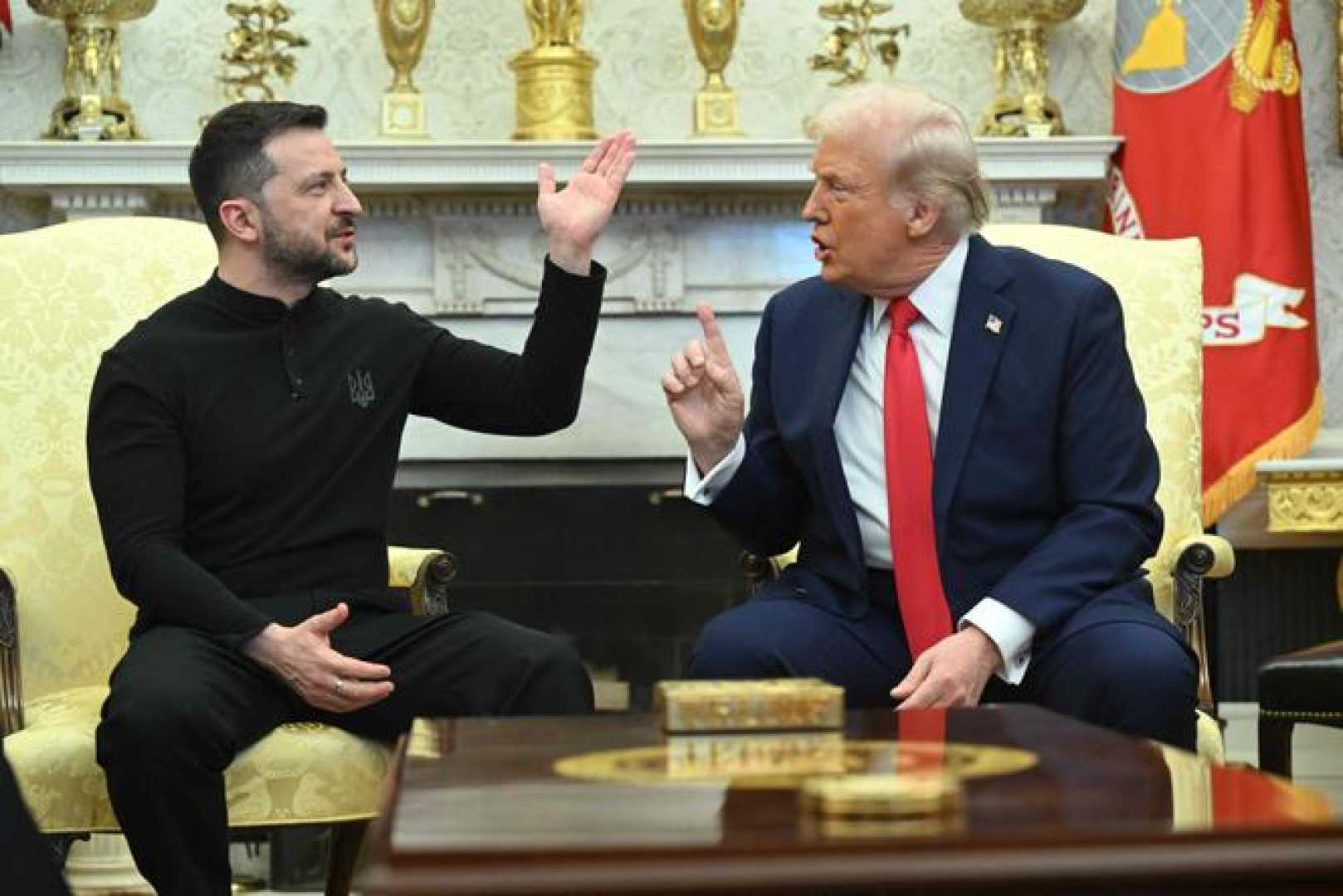Politics
Trump Blames Zelensky for Ukraine War After Attack Kills 35

WASHINGTON, D.C. — Former President Donald Trump has placed blame on Ukrainian President Volodymyr Zelensky for instigating the ongoing war with Russia, a statement made just a day after a devastating missile strike on the Ukrainian city of Sumy left 35 people dead and 117 injured. Trump’s remarks came during a press briefing at the White House on April 15, 2025.
“You don’t start a war against someone 20 times your size and then hope that people give you some missiles,” Trump said, suggesting both Zelensky and Russian President Vladimir Putin share responsibility for casualties in the conflict. He also criticized former President Joe Biden, implying his administration contributed to the ongoing hostilities.
Trump’s comments coincided with widespread outrage over Russia’s recent attack on Sumy, described as the deadliest assault on civilians this year, targeting civilians on Palm Sunday. While he claimed multiple millions have died due to this conflict, actual estimates of casualties since Russia’s full-scale invasion on February 24, 2022, range in the hundreds of thousands.
During his remarks, Trump expressed doubt about Zelensky’s competence, stating, “When you start a war, you got to know you can win.” He has often blamed both Zelensky and Biden for the war, despite the conflict’s roots tracing back to 2014 when Russia annexed Crimea and supported insurgents in eastern Ukraine.
“Biden could have stopped it, and Zelensky could have stopped it, and Putin should have never started it. Everybody is to blame,” Trump stated. His relationship with Zelensky has been a contentious one, heightened by a February meeting where Trump accused the Ukrainian leader of “gambling with World War Three” for failing to initiate peace talks with Russia earlier.
As tensions simmer, the Kremlin maintains there is no specific timeline for peace talks despite ongoing discussions with U.S. officials. Kremlin spokesman Dmitry Peskov characterized the recent communications as “useful and positive,” but provided no clear outline for peace.
Meanwhile, on the ground, military confrontations remain fierce. The Ukrainian military claimed responsibility for a drone strike on Russia’s Kursk region, involving over 100 drones, resulting in casualties and highlighting the relentless hostilities between the two nations. In a parallel development, Ukraine’s air force reported that Russia conducted missile strikes overnight, with significant interceptions of approaching drones.
Amid these developments, Zelensky has alleged that Russia recruited fighters from China, leading to accusations from Beijing and further complicating the diplomatic landscape. In the U.S., bipartisan initiatives to support Ukraine are gaining momentum, with lawmakers advocating for increased military and reconstruction support.
In light of the Palm Sunday attack, Ukrainian citizens are mourning the victims. A combat medic described the scene as chaotic, emphasizing the human cost of the ongoing conflict. “It was chaos. There were mountains of corpses. My shoes were covered in blood,” the medic recounted.
Despite calls for peace, Trump insists on the necessity of stopping the violence, indicating that proposals could be forthcoming, albeit without specifics. His comments have elicited mixed reactions, highlighting the complex political atmosphere surrounding this multifaceted crisis.
As the conflict continues unfolding, observers emphasize the urgent need for a ceasefire. Zelensky has heightened calls for international pressure on Russia, asserting that without it, aggressive tactics will persist. The international community remains vigilant, hopeful for a resolution to a crisis that seems to deepen with each passing day.












